

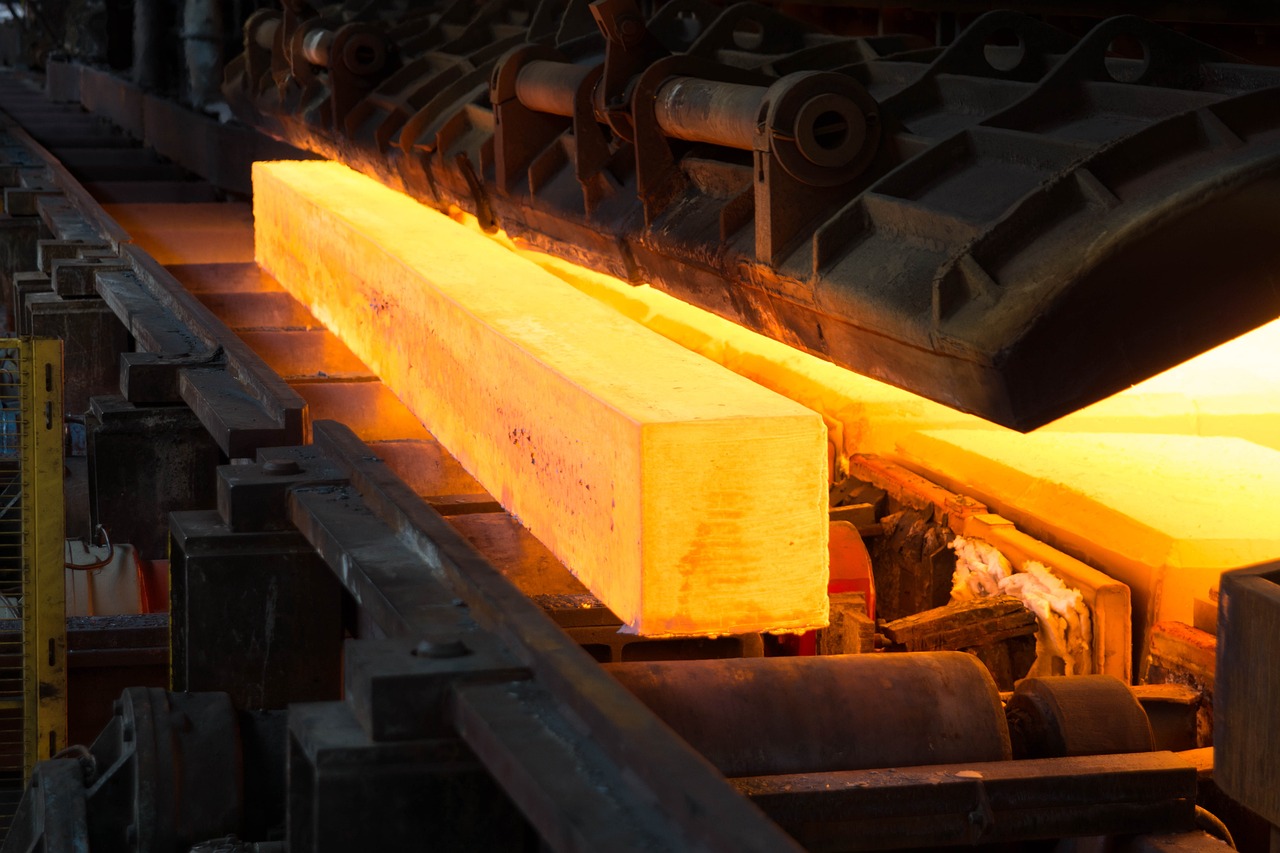
Did you know that steel, an age-old material, is still shaping our future in astonishing ways? From the tallest skyscrapers to the simplest household items, steel's dominance isn't just historical—it's pivotal for tomorrow.
As industries across the globe face unprecedented challenges, steel's role has never been more crucial. Rising demands, evolving technologies, and environmental factors make this discussion more relevant than ever.
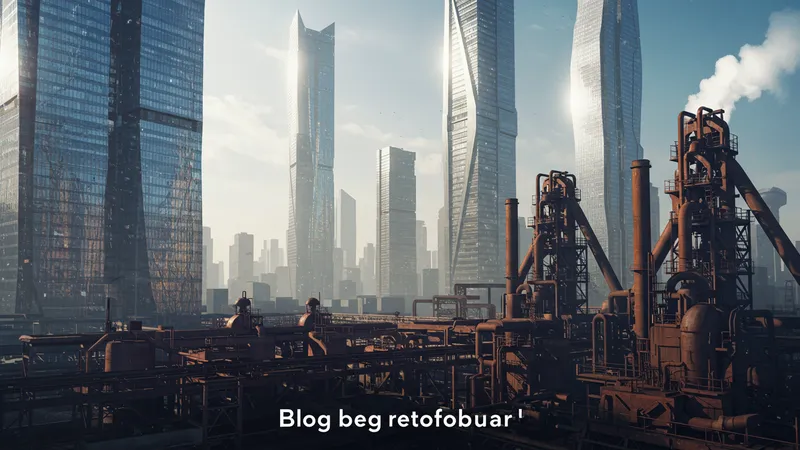
While steel seems like a robust, unwavering component of industry, there's a secret battle being waged beneath the surface—one involving innovation, sustainability, and resource management. Countries are fiercely competing for supremacy in steel production, transforming geopolitics in unexpected ways. But that’s not even the wildest part…
New technologies promise to revolutionize steel production, with breakthroughs anticipated in recycling and efficiency that could shatter existing paradigms. Inventors and engineers are making leaps that could redefine how we think about this age-old material. But the most shocking revelations are yet to come...
What happens next shocked even the experts, as we're about to delve into the hidden dynamics driving the steel industry. From unseen innovations to compelling market shifts, this journey promises to unravel the mysteries behind the metal. Are you ready to discover the unexpected?
The steel industry is currently undergoing remarkable economic shifts. Did you know that pricing fluctuations aren't solely dependent on supply and demand? Significant impacts also arise from global tariffs and trade wars. Recently, the U.S. imposed new tariffs, resulting in a surprise ripple effect across international markets. What you read next might change how you see this forever.
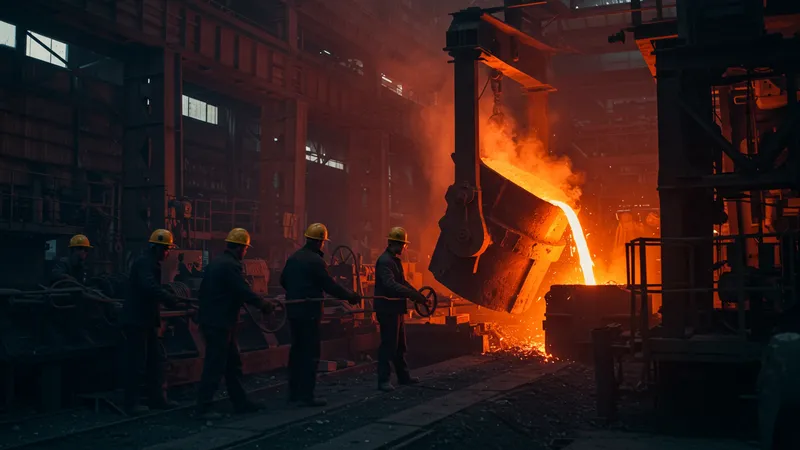
Insider tips reveal that some countries are stockpiling steel to leverage future shortages. This strategic reserve management is reshaping trade alliances worldwide. Steel is becoming a new economic tool— one deeply intertwined with international diplomacy. But there's one more twist to this intricate dance...
Advancements in technology are altering the very fabric of steel production and distribution. Smart factories employ IoT and AI for precision and efficiency, leading to a decrease in waste and an increase in profits. These technological fronts are where the true industrial battles are fought. Could this be the end of traditional steelmaking?
In the new world of steel production, every player is moving with caution. Geopolitical movements and environmental regulations weigh heavily on design and manufacturing decisions. The intricate web weaves tighter, with more stakeholders involved than ever before. But there are unseen forces at work...
Steel production's environmental footprint is immense, leading to global calls for greener practices. Revolutionary in their approach, companies are now investing in green technologies to lessen their impact. Solar-powered mills and hydrogen-based production are on the horizon, suggesting a brighter, cleaner future for this industry. But there's more than meets the eye...
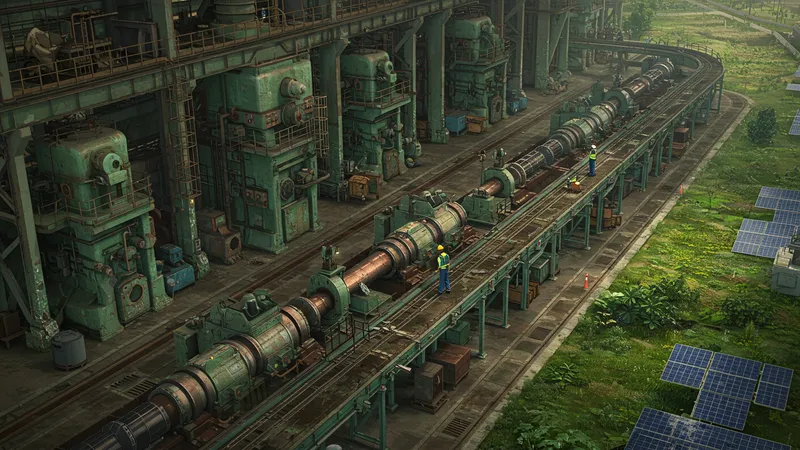
On top of that, innovations in recycling processes are expected to drastically reduce waste. For instance, closed-loop systems claim to recycle steel with 70% less energy. Such change could redefine what "sustainability" really means for longtime players in the business. Still, skeptics raise eyebrows at these claims. What lies ahead?
Challenges remain—namely, aligning industry compliance with new environmental legislation. New standards across Europe are pressing companies to adapt swiftly or face fines. This is creating a competitive edge for those swiftest to innovate. Are these winds of change pushing the industry toward a new era? Only time will tell...
While companies grapple with these changes, consumers are driving demand towards more sustainable options. This has made corporate responsibility no longer just a marketing ploy but a business necessity. The untapped economic potential of sustainable steel is significant and could transform entire markets. And yet, one major question looms large...
Beyond the glint of chrome and the strength of alloys lies the unseen innovations that are accelerating steel manufacturing. Smelting techniques have become more advanced with novel furnace technologies reducing emissions drastically. Yet, few realize the sweeping potential of these advances. There's an unexpected catch to consider...
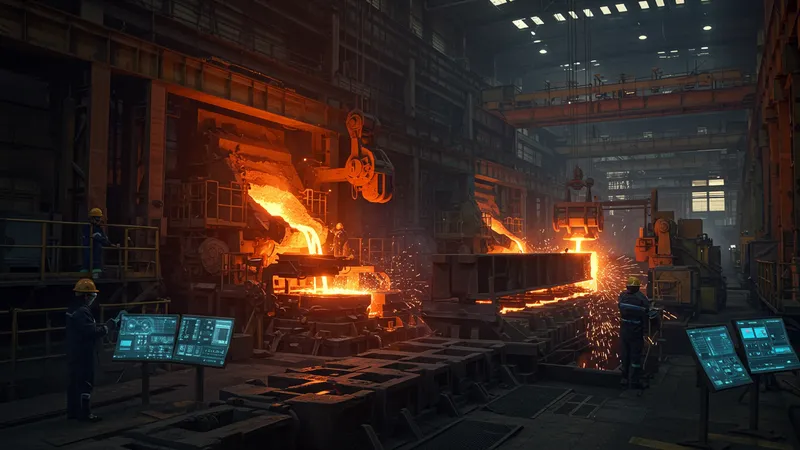
Automation within the manufacturing process has led to a revolution in efficiency. Robotic arms, once the stuff of science fiction, now carefully craft steel products with precision unattainable by human hands. However, this raises significant concerns about workforce displacement and economic balance. What does this mean for the industry's labor force?
Furthermore, incremental developments in metallurgy are paving pathways to entirely new applications for steel. Ultra-lightweight yet strong alloys are being used in aerospace and automotive industries, touting capabilities previously deemed unimaginable. But could this spark wider industrial changes?
Intellectual property within steel R&D is a fiercely competitive space. Patents act as both shields and swords, as companies race to secure new innovation. As the industry evolves, the pace at which companies must adapt only quickens. Could this relentless pursuit for the next big thing prove unsustainable? The answers may surprise you...
Steel influences nearly every technological advancement in unexpected ways. From silicon wafers in semiconductors to the casings of digital devices, steel is integral yet overlooked. Understanding this undercurrent provides a fresh perspective on modern tech evolution. But here's the kicker...

Have you ever considered the resilience of your smartphone? Without steel's durability, today's gadgets might not withstand the rigors of daily life. High-strength steel ensures that devices are not only robust but also relatively lightweight. This hidden role of steel might just surprise you...
In data centers, steel's thermal conductivity plays a critical part in maintaining optimal temperatures for servers—arguably the backbone of our digital age. Without it, our reliance on cloud computing might face unprecedented challenges. What else could be underpinning our digital infrastructure?
Despite many industry insiders advocating for alternative materials, steel's versatility remains unparalleled. No other substance marries strength with cost-effectiveness in the same way. So what truly keeps the industry from moving on from steel altogether? The reasons are more complex than you might think...
The burgeoning economies of emerging markets are thirsty for steel, fuelling unprecedented demand. Construction and infrastructure projects are causing upticks in activity across continents. But what does this mean for global supply chains?

In Africa and Asia, rapid urbanization and infrastructure development are increasing steel requirements on a grand scale. This demand prompts investments in both energy-efficient technologies and labor environments. The impacts are astonishing, but there's a challenge ahead...
Yet, this burgeoning demand also exposes vulnerability within global supply chains. Dependency on a few dominant steel exporting nations can cause ripple effects through financial markets. How can these potentially unstable dependencies be mitigated?
Developing domestic steel industries offers one solution, presenting emerging markets with opportunities for local innovation and job creation. This may serve as a counterbalance to existing supply chain challenges. Yet, the potential for rapid market shifts cannot be underestimated...
Steel is essential to national security, playing a pivotal role in defense and military applications. Tanks, warships, and aircraft rely heavily on high-grade steel to ensure durability and protection. But that's not all...
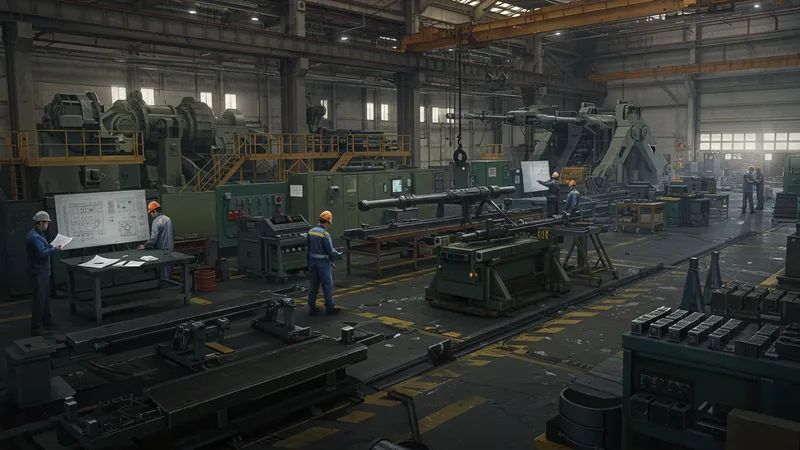
Research and technologies derived from steel engineering continue to influence modern defense strategies. Innovations in this area are kept well under wraps, citing national security concerns. But are these innovations enough to keep ahead of adversaries?
In defense contracts, nations prioritize the highest quality standards for steel procurement. This strategic requirement ensures state-of-the-art performance, but it comes with significant costs and logistical hurdles. What compromises are fundamental to steel procurement and usage?
The importance of steel extends beyond equipment to include infrastructure and logistics, secure in its ability to withstand all forms of harsh conditions. This lesser-known aspect fortifies defensive positions in international conflicts. Are we valuing this hidden ally as much as we should?
Steel has not just shaped our modern world; it has imprinted upon our culture and history. From the blades of Damascus to the structural beams of the Eiffel Tower, the narrative of steel is deeply intertwined with human progress. There’s more to uncover...
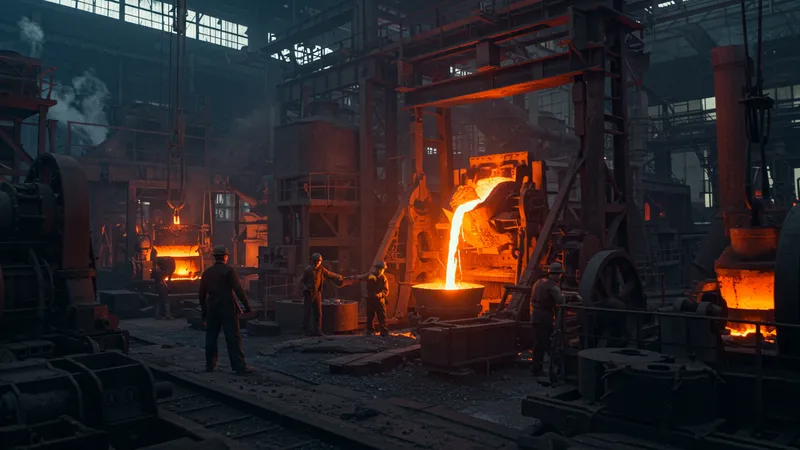
Historically, steel production has often mirrored the power structures of the world. Locations thriving with steel development are often historically rich or politically significant. How does steel maintain this role today?
The artistic influence of steel is irrefutable. Sculptors and designers have harnessed its strength and ductility to create works that inspire and endure. Yet, the art forged in steel remains overlooked. Could this familial bond between art and industry evolve further?
The passage of time reveals the impact of steel in less tangible ways, as cities grow and traditions form around steel-based industries. New generations are now finding modern meanings in this storied material. Will we continue to honor these roots?
The advancement of composite materials could transform steel's future. New alloys are pushing the limits of what is possible, achieving exceptional properties previously unattainable. How might this change our reliance on traditional steel forms?
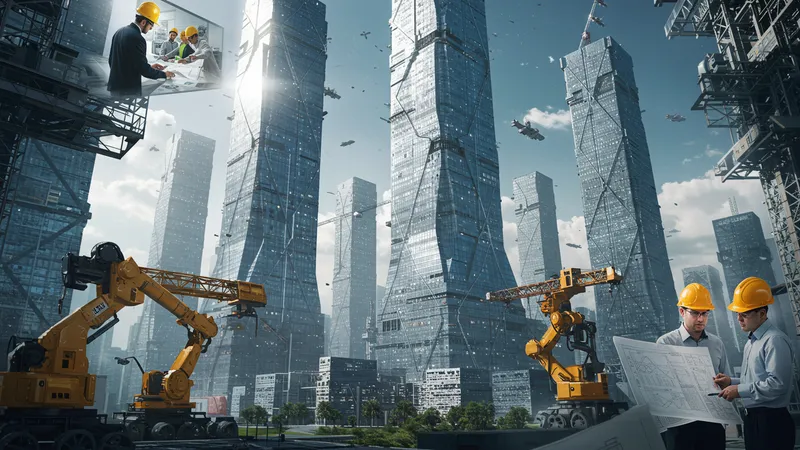
Collaborative efforts between academia, private enterprises, and government bodies are underway to explore alternatives poised to revolutionize industry standards. These endeavors are a smart investment in fortifying global resources. But are we investing enough?
Novel applications leveraging the benefits of nanotechnology in steels could unlock prospects unimagined just decades ago. Scientists work tirelessly to enhance steel's strength, corrosion resistance, and flexibility at the molecular level. Could this finally bring about a new era?
No matter how materials evolve, one truth remains: steel will be a team player within composite solutions rather than a lone material. The future may diverge from the traditional path, yet steel's legacy is steadfast. What might be the implications of this new chapter?
Steel: a powerhouse, a tool for nations, and a testament to humanity’s ingenuity. As we unlock the potential held in new technologies and strategies, the industry's future gleams with promise, complexities, and uncharted territories. In the story of steel, change is constant. As emerging trends and new markets evolve, we invite you to share these insights, bookmark them for future reading, and consider the ways in which steel silently strengthens the foundation of our lives. What role will you play in shaping steel’s storied future?